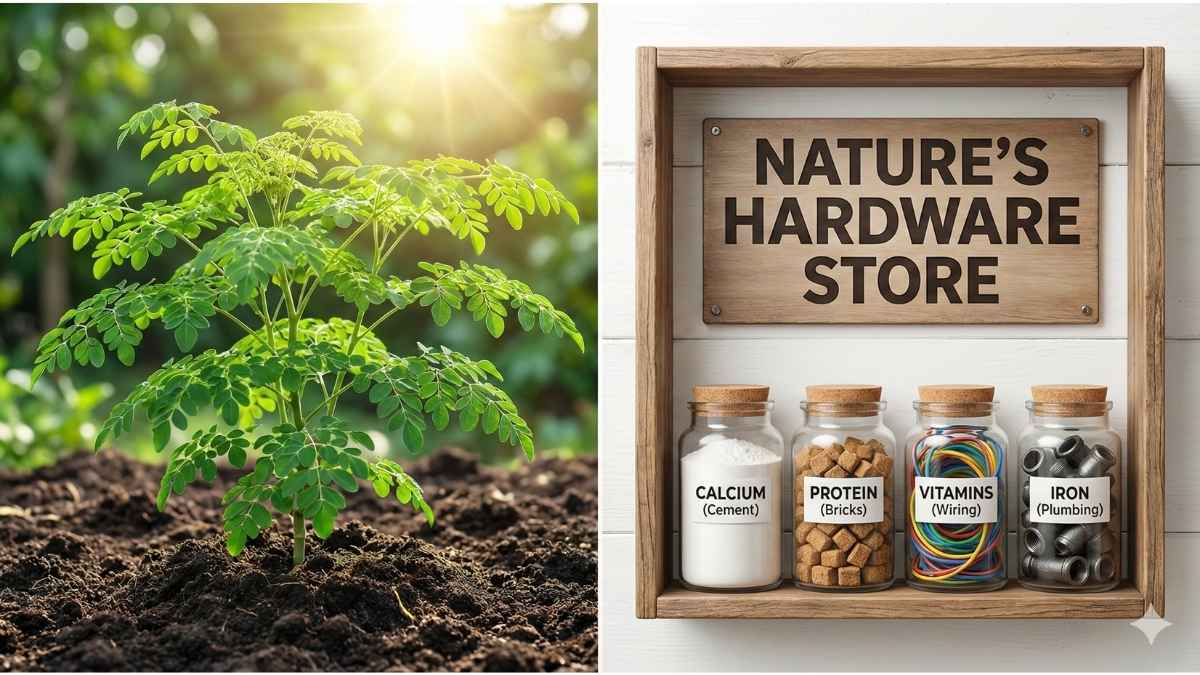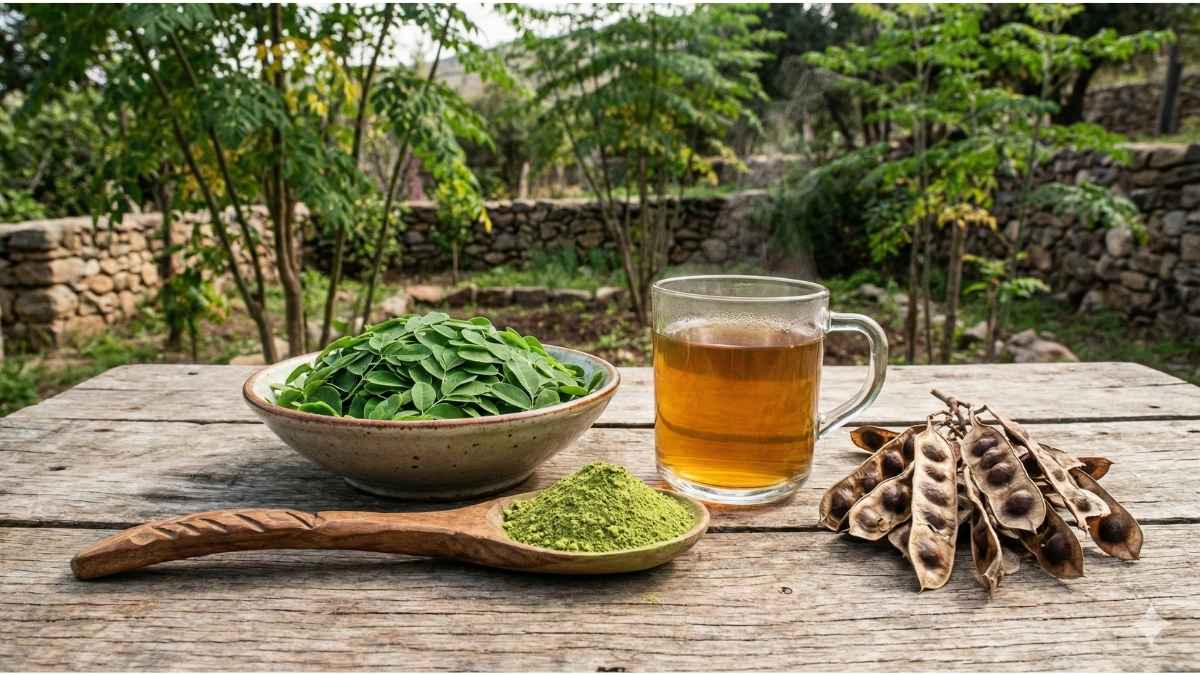Moringa Benefits: A PhD Farmer’s Guide to Using the ‘Miracle Tree’ for Family Protection
You are standing in the supplement aisle, or perhaps scrolling through endless product pages late at night, and you feel that familiar knot of anxiety. Is this safe? Is it real? Or is it just another bottle of "snake oil" wrapped in a pretty green label? As a parent, you aren't just shopping; you are guarding the gates of your home. You want to protect your family from the hidden toxins in our food system, but the noise of marketing hype makes it nearly impossible to know who to trust.
I understand that hesitation intimately. As a PhD student in agriculture who has spent a lifetime with my hands in the soil, I have seen both the incredible power of nature and the deceptive tricks of the industry. My goal is not to sell you a miracle cure. My goal is to sit down with you, as a scholar and a friend, and walk you through the truth about Moringa benefits—the good, the bad, and the vital safety protocols you need to know before you bring this plant into your kitchen.
🌱 The PhD Farmer's Take Away: Your Quick Guide
- ✓ Safety First: Avoid the roots (toxic) and start low (1/4 tsp) to prevent digestive upset.
- ✓ Nutrient Density: Moringa is like a "nutritional hardware store," packing iron, calcium, and complete protein into a single leaf.
- ✓ Quality Check: Only buy vibrant emerald green powder; brown powder is oxidized and nutritionally dead.
- ✓ For The Family: Powerful support for women's energy and children's growth, but requires strict organic sourcing to avoid heavy metals.
The "Damaging Admission": Why I Respect This Plant?
Let’s start with honesty. If anyone tells you Moringa has zero side effects, they are either lying or they have never actually grown and used it. I learned this the hard way with my own wife.
When I first harvested Moringa from our farm, I was so excited about the research—the calcium, the vitamins, the antioxidants—that I forgot to tell her about dose of moringa for the first time. She took a full tablespoon of the powder. It was a mistake. Her body wasn't ready for that level of potency and fiber. She suffered nausea and stomach pain that lasted for 24 hours. It took medication and rest to restore her.
That experience taught me a lesson I want to pass on to you: Start low and go slow. This is a powerful, pharmacologically active plant, not a benign garnish. When treated with respect, it is a game-changer for your family's health. When rushed, it bites back.
The Nutritional "Hardware Store": What Is Moringa Good For?
So, what is moringa good for? To answer this, I like to use an analogy from the farm. Think of your family's body like a house you are constantly building and repairing. Most foods are like a single delivery of wood or glass.
Moringa is different. It is like walking into a fully stocked hardware store. It doesn't just provide one thing; it provides the raw materials for almost every repair job your body needs.
- The Bricks (Complete Protein): Unlike most plants, Moringa leaves contain all nine essential amino acids. This makes it a complete protein—rare in the plant world—essential for repairing tissues and growing strong muscles in children. 💪
- The Cement (Calcium): We often think of milk for bones, but Moringa leaves are packed with calcium, vital for that "Proactive Protector" parent worried about their kids' growth spurts or their own bone density later in life.
- The Wiring (Vitamins): It is rich in Vitamin A (for vision and immunity) and B-Vitamins (for energy conversion), acting like the electrical system that keeps the lights on in your body.
- The Rust Protection (Antioxidants): This is where the science gets exciting.

Science-Backed Benefits: A Scholar’s Perspective
From my research as a PhD scholar, I don't look for "magic." I look for mechanisms of action. How does this actually work in the cell? The Moringa benefits are driven by bioactive compounds like isothiocyanates, chlorogenic acid, and quercetin.
Here is how these compounds translate into real-world protection for your family:
1. The Antioxidant Shield 🛡️
Our bodies are constantly "rusting" from oxidative stress caused by pollution, processed foods, and stress. Moringa is packed with quercetin and beta-carotene, which act like a rust-proofer for your cells. They neutralize the free radicals that cause aging and disease.
2. Balancing Blood Sugar
This is critical for modern families fighting the sugar-laden food system. Moringa contains chlorogenic acid—the same compound found in coffee—which has been shown to help moderate blood sugar levels after meals. It’s not a license to eat candy, but it is a powerful ally in metabolic health.
3. Fighting the "Silent Fire" of Inflammation
Chronic inflammation is the root of many modern illnesses. The isothiocyanates in Moringa leaves are potent anti-inflammatory agents. In my own home garden, I see this as the plant's way of cooling down the system, helping to soothe the body from the inside out.
Benefits of Moringa for Women: A Special Focus
I want to specifically address the benefits of moringa for women, as this is one of the most common questions I receive. The nutritional profile of this tree seems almost custom-designed for the unique challenges of female biology.
- The Iron Clad Promise: Iron deficiency (anemia) is a thief of energy for many women. Moringa powder is a potent source of plant-based iron. In our family, we use it to combat that deep, bone-weary fatigue that no amount of coffee seems to fix.
- Bone Density and Menopause: As women age, the drop in estrogen can leave bones vulnerable. The high calcium and Vitamin K content in Moringa acts as a shield, supporting bone integrity during these critical transition years.
- Hormonal Balance: While research is ongoing, the rich nutrient density helps the body regulate its own hormonal signals better. It’s about giving your body the tools it needs to find its own equilibrium. ❤️

The Organic Imperative: Why "Fake Food" is Dangerous
Here is a fact that keeps me up at night: Moringa is a bio-accumulator.
In agricultural terms, this means the tree is like a sponge. It absorbs everything from the soil—the good nutrients, but also the bad toxins. If Moringa is grown in soil contaminated with heavy metals or sprayed with synthetic pesticides, those poisons end up concentrated in the leaves.
This is why, for the "Proactive Protector," Organic is not optional. It is mandatory. When you buy non-organic Moringa, you risk feeding your family concentrated lead or mercury. Always look for the USDA Organic seal. It is your only guarantee that the "sponge" was grown in clean water and safe soil.
The Moringa Ecosystem: Exploring the Different Forms ✨
Just like the diverse items in a farmer's market basket, Moringa offers its benefits in many forms.
- Moringa Leaf Powder: The most common and versatile form.
- Moringa Tea: A soothing and gentle way to enjoy its benefits.
- Moringa Oil: A luxurious, nutrient-rich oil for skin and hair.
- Moringa Seeds & Capsules: For convenient, concentrated doses.
The "Green vs. Brown" Quality Test
How do you know if you bought good powder? Use my simple "Farmer's Eye" test:
- Vibrant Emerald Green: This is what you want. It means the leaves were dried slowly in the shade, preserving the delicate nutrients and the chlorophyll.
- Dull Brown or Tan: Throw this away. It means the leaves were sun-dried or heat-blasted. The UV rays have oxidized the nutrients. It is essentially "dead" dust.
The PhD Safety Protocol: How to Use It Safely
Remember my wife's story?
We don't want a repeat of that. Here is the protocol I recommend to all my friends to ensure a positive experience.
- The "Low and Slow" Ramp: Start with just 1/4 teaspoon per day for the first 3 days. Mix it into a smoothie or yogurt (never plain water initially) to buffer your stomach. If you feel fine, increase to 1/2 teaspoon.
- The Thyroid Check: If you are on thyroid medication (like Levothyroxine), be careful. Moringa can interfere with absorption. A common recommendation is to leave a 4-hour gap between your meds and your Moringa, but always consult your doctor first.
- The Pregnancy Red Light: From what I’ve learned in my research, the roots and bark of the tree contain compounds that can cause uterine contractions. While leaves are generally safer, my advice as a conservative scholar is to avoid Moringa completely if you are pregnant or trying to conceive, just to be absolutely safe. 🛑
Building Your Family's Routine: Hub and Spoke
You now have the foundation. But how do you actually fit this into your busy life? Think of this article as your central map. To become a true expert, you need to explore the specific paths that fit your needs:
- For the Smoothie Lovers: If you want to hide the earthy taste for your kids, you need the right recipes. How to find the "Hulk Smoothie" that my kids actually ask for.
- For the Busy Parent: If you don't have time to blend, or you can't stand the taste, capsules are a valid option. [Check out our Moringa Capsules Guide] to see how to choose a pure one without fillers.
- For the Gardeners: Do you want to ensure 100% purity? Grow it yourself! It is easier than you think. [Visit our Growing Moringa Guide] to learn how to turn a seed into a tree in just a few months.

Conclusion: From Anxiety to Confidence
We live in a world of "fake food" and confusing labels. It is exhausting. But standing here, with the science in one hand and the soil in the other, I can tell you that Moringa benefits are real.
It is not a magic wand that fixes everything overnight. It is a tool. It is a way for you to add a layer of protection to your family's health "bucket," ensuring they have the reserves to fight off whatever the world throws at them.
By choosing organic, starting slow, and listening to your body, you are no longer just a consumer. You are a Proactive Protector, making an informed choice based on truth, not hype.
Stay healthy, stay curious, and keep your hands in the soil (or at least your smoothies green!). 🌿
Dive Deeper with These Trusted
Sources 🧠
The journey of discovery doesn't have to end here. For those of you who love to explore the research for yourselves, these three reliable sources are an excellent next step to learn more about the science behind Moringa.
1. Healthline: "6 Science-Based Health Benefits of Moringa Oleifera":
- An excellent resource for understanding the science in plain English. Healthline connects the health claims we've discussed to the specific studies that back them up, making it perfect for a clear, evidence-based overview.
- Click Here
2. National Institutes of Health (NIH): "Moringa oleifera: A review on nutritive importance and its medicinal application":
- For those who want to go straight to the source. This comprehensive review from the NIH offers a deep dive into the primary scientific literature on Moringa. It's a direct look at the foundational research that informs our understanding of this plant.
- Click Here
3. ScienceDirect:
- Think of ScienceDirect as a massive, trusted digital library where the world's leading scientists, doctors, and researchers publish their most rigorous findings. It is not a blog or a marketing website; it is a source of peer-reviewed evidence.
- Click Here
We share these links not for you to get lost in the technical details, but to give you the peace of mind that comes from seeing the depth of research yourself. This is how we move From Food Confusion to Family Confidence together.
